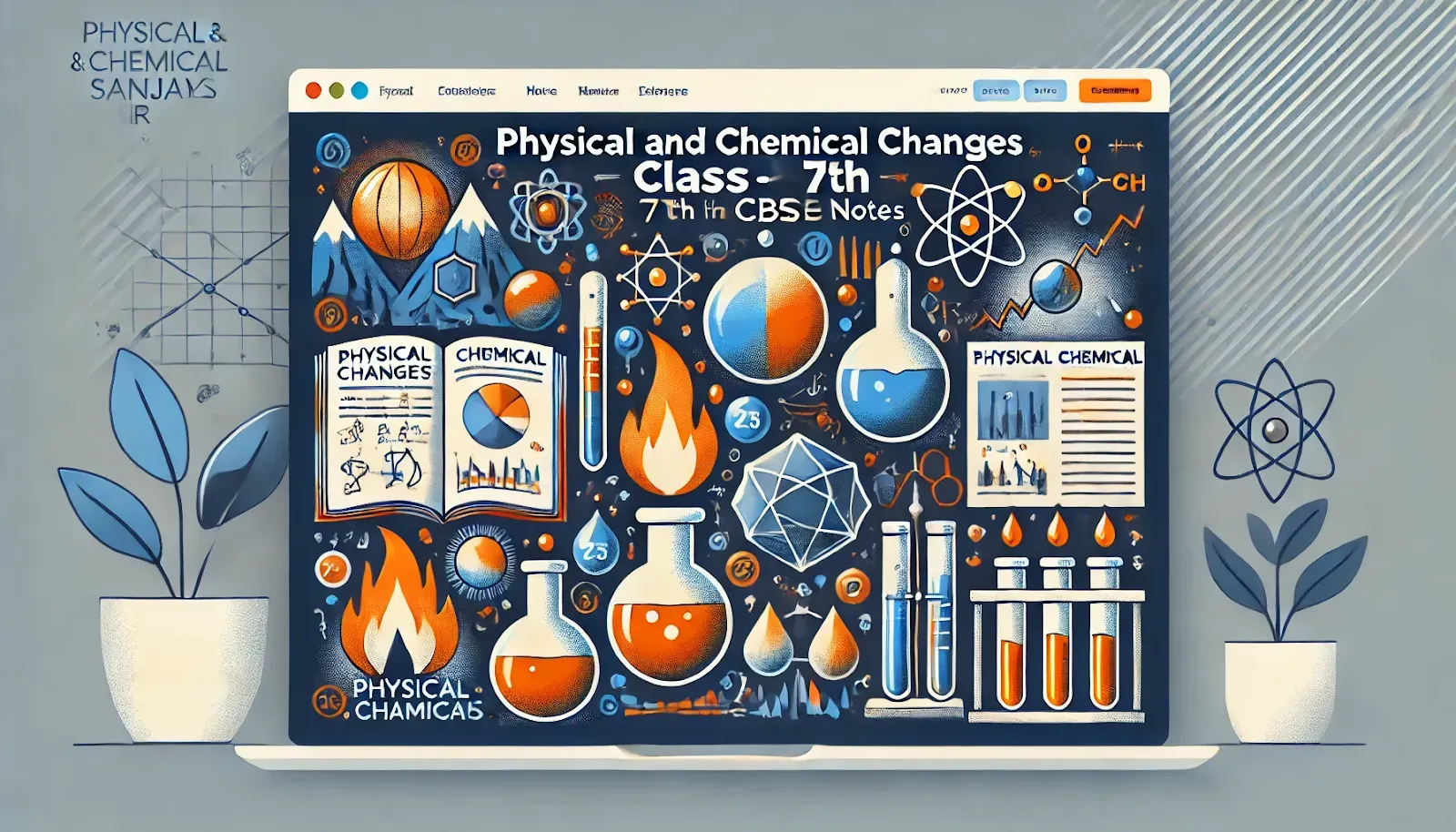Class 7 Science: Physical and Chemical Changes
1. Physical Changes
➥ A physical change is a change in the appearance or state of a substance, but its chemical properties remain the same.
➥In physical changes, no new substance is formed. Most physical changes are reversible.
Examples:
- Melting of ice
- Breaking of glass
- Folding of paper
2. Chemical Changes
➥ A chemical change is a change in which a new substance is formed with different properties.
➥ Chemical changes are usually irreversible. Energy in the form of heat, light, or sound is often released or absorbed during a chemical change.
Examples:
- Burning of wood
- Rusting of iron
- Cooking of food
3. Difference Between Physical and Chemical Changes
| Physical Change | Chemical Change |
|---|---|
| Involves a change in appearance or state. | Involves the formation of a new substance. |
| Reversible. | Irreversible. |
| No new substance is formed. | New substance with different properties is formed. |
| No energy change usually occurs. | Energy is released or absorbed. |
4. Will You Burn Firecrackers Anymore?
➥ Burning firecrackers causes air pollution and harms the environment. They release harmful gases like carbon dioxide, sulfur dioxide, and nitrogen oxides. Consider using eco-friendly alternatives for celebrations to reduce pollution.
5. Rusting of Iron
➥ Rusting is a chemical change where iron reacts with oxygen and moisture to form rust (iron oxide). This process weakens iron and leads to its decay over time.
6. Prevention of Rusting
➥ Preventing rusting involves methods to stop iron from reacting with oxygen and moisture.
Methods:
- Painting
- Applying oil or grease
- Galvanization (coating iron with zinc)
- Using rust-resistant alloys like stainless steel
7. Crystallisation
➥Crystallisation is the process of forming solid crystals from a solution. It is a physical change where the substance retains its chemical properties.
Example: Crystals of salt forming from seawater after evaporation.
8. Need of Ozone Layer
➥ The ozone layer protects the Earth from harmful ultraviolet (UV) rays from the sun. UV rays can cause skin cancer, cataracts, and damage crops. Protecting the ozone layer is important for life on Earth.








0 Comments